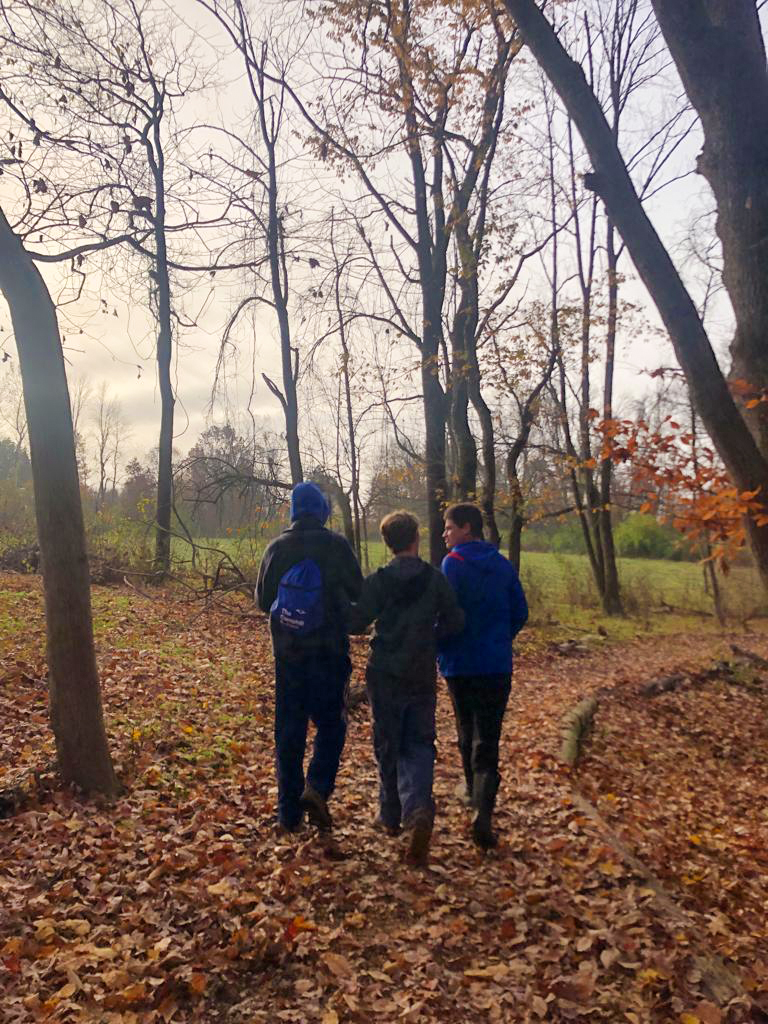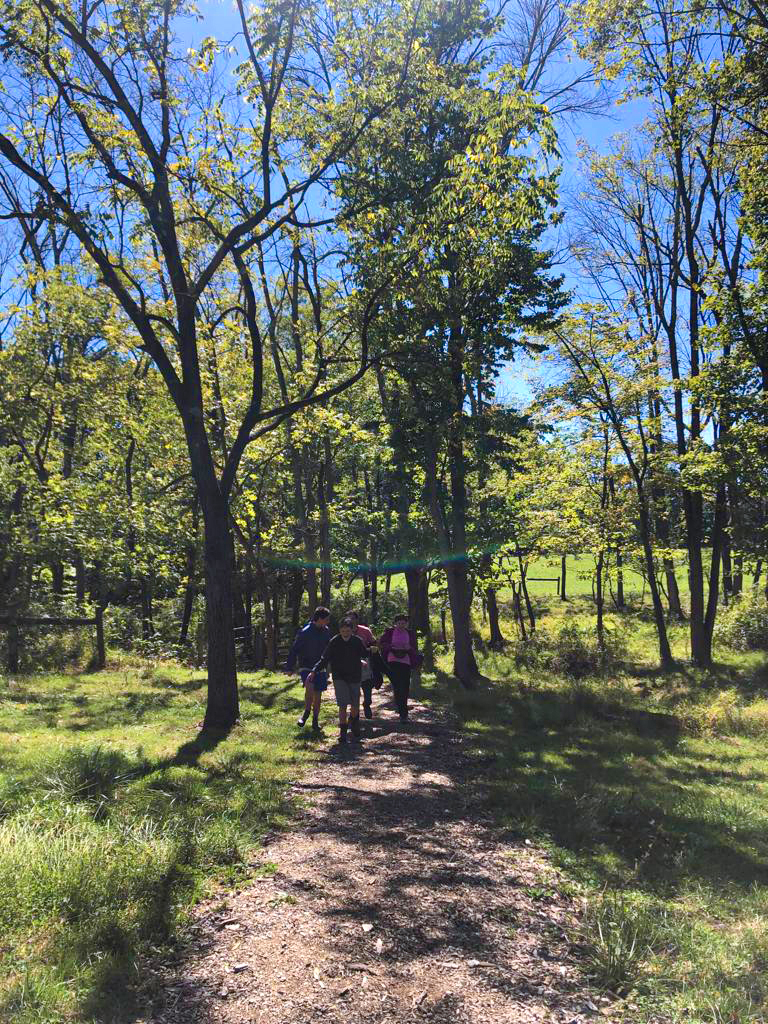
Every day we take the same walk. Getting into boots, coats, or summer sunscreen and hats, we head out the door, cross through the trellised archway, and down the woodchipped path. We come to the first of four kissing gates -gates that keep the cows and sheep in but allow for our easy passageway- and head down the hill. Sometimes we have to “hey bup” the cows out of the way or weave our way around cow pies. We go through another gate and into a forested area – my favorite part of the walk. In the summer, you can catch an occasional glimpse of the blue sky through the dense canopy, but in the winter, it’s wide open, light streaming through bare branches and boughs. At night fairy lights guide the way, an occasional blip of light around a corner. We walk past allspice trees; occasionally, I’ll pick a twig and chew it to release the warming spicy flavor of its bark. And then through a third gate to head up the field toward Lucas House. The field here is full of colors and shapes of native grass and wildflowers. In the spring and summer, the fields filled with a rainbow; the blue-purple of chicory, yellow golden oxeyes, pink, red, and purple clovers, and white yarrow. In winter, the field still has a variety of colors but is now dulled by cold; reds, browns, muted greens, and faded hay yellows of the grasses.
We pass by Lucas House, often joining the Lucas students and co-workers as they start out on their walk. Now we walk and talk along the brambles and newly planted trees planted to shade this section of the path. In summer, the sun scorches anywhere exposed, and walking without shade can be a bit too much. We come out into the hay fields and are offered a choice in the path – the official path – maintained by our estate crew with woodchips going around the corner of the field – or a growing desire path that cuts the corner. In spring, we’ll put up a barrier to prevent this shortcut from jeopardizing that section of the planted field, but for now, many prefer to take the path of least resistance.
We walk along the field bordered by scraggly ivy-covered trees. Rustling overhead is the deep green dinosaur footprint-shaped leaves of the sassafras tree that turn a bright red in fall. I often pick a leaf from the tree and crush it in my fingers to release the earthy sweet smell. “Smell this” I say to my students “This is what root beer used to be made from!” We come to the end of the field, walk on past the big stump, and down the stairs to the road crossing. Some students have the independence to cross by themselves, while others wait to walk across with someone who knows to look left, right, left, and listen for cars coming around the corner.
We cross and go through the final gate to the farm, making sure to latch it behind the last person and go down the path to cross a bridge over our little creek, and then you’re in the final stretch. From here, you can catch a glimpse of the spring house, an old, abandoned stone structure that was used to protect a freshwater source and keep food stores cold in the original days of the farm. This school year, our garden crew has excavated the house from the encroaching brambles and daylighted the spring from the muck. From here, students in the garden crew will veer off to the left to go to the greenhouse, and the rest of us continue to the Ed-center, the de facto gathering place for most crews.
This walk has become one of my favorite parts of each day. We walk to crew in the morning, and back at lunch, then to afternoon crews and back for dinner. On average, all this walking brings me to about 4 miles a day – not including the walking and moving around I do in my crews. The walk is a physical transition between home life and crew life. It offers space for play, pondering, conversation, and grounding. Each day is anew, and each walk is a new experience.
The walk is part of living at Foxfield. Other houses do the walk often, but not every day like the rugged folk of Foxfield. We will, on occasion, take the car to crews on days when the weather is particularly nasty or days when we’re feeling particularly straggly. On those days, I always end up missing that time I could have been walking. The walk becomes the day, and the day becomes the walk. A moving meditation to lead us into what is next.
When we head home after lunch, and after our afternoon crews, we take the path in reverse. Over the bridge, cross the road, choose the shortcut (or not) through the kissing gates, move the cows, and back to our cozy pink house.

